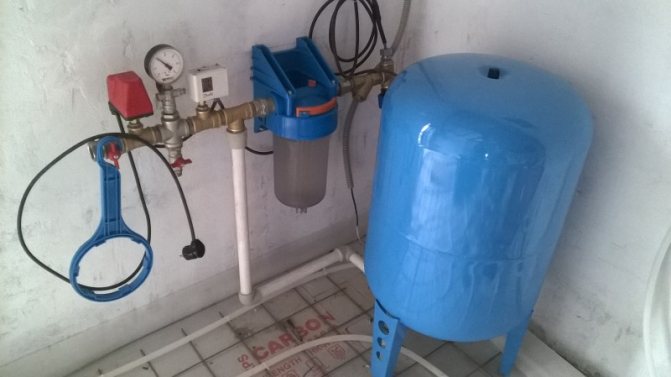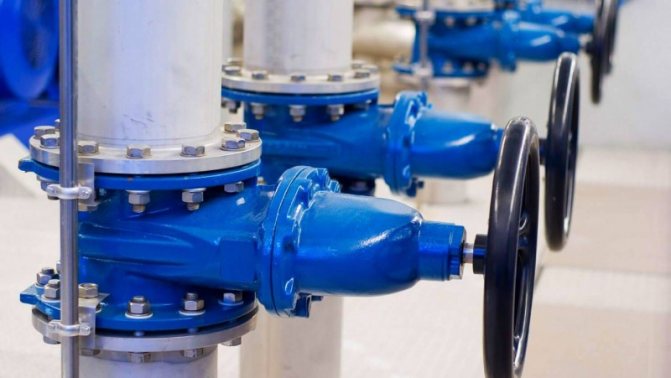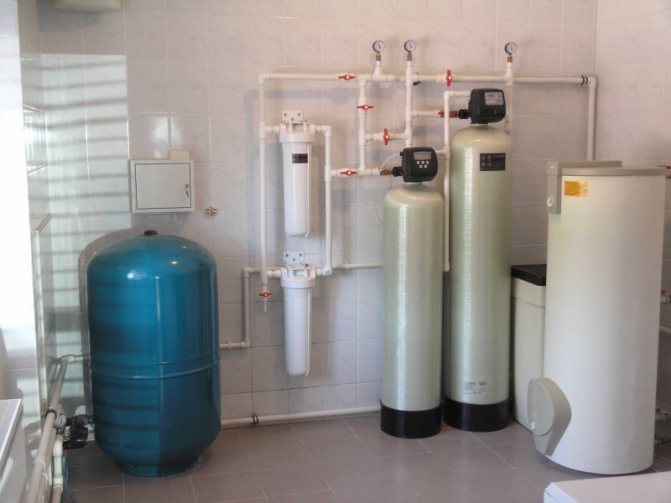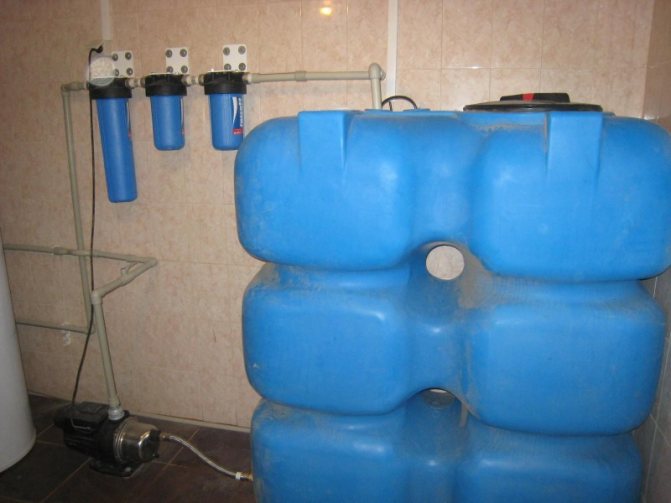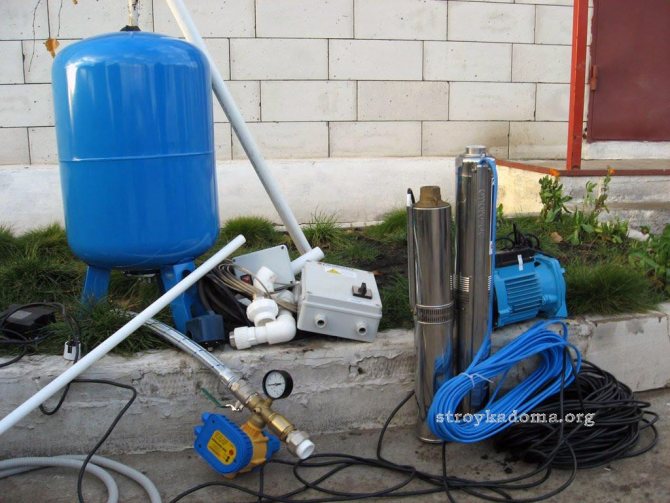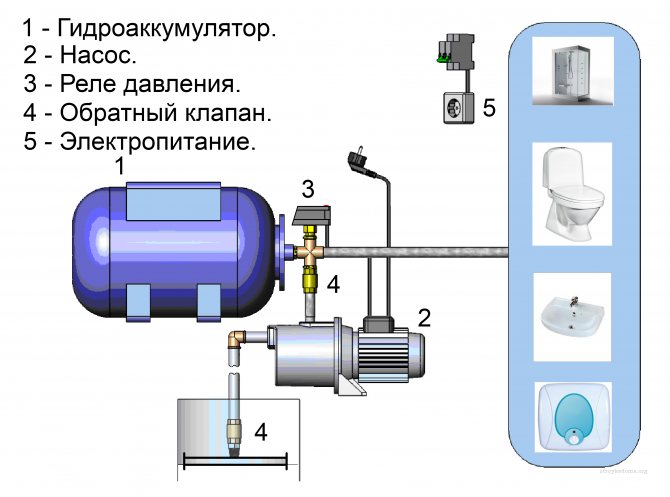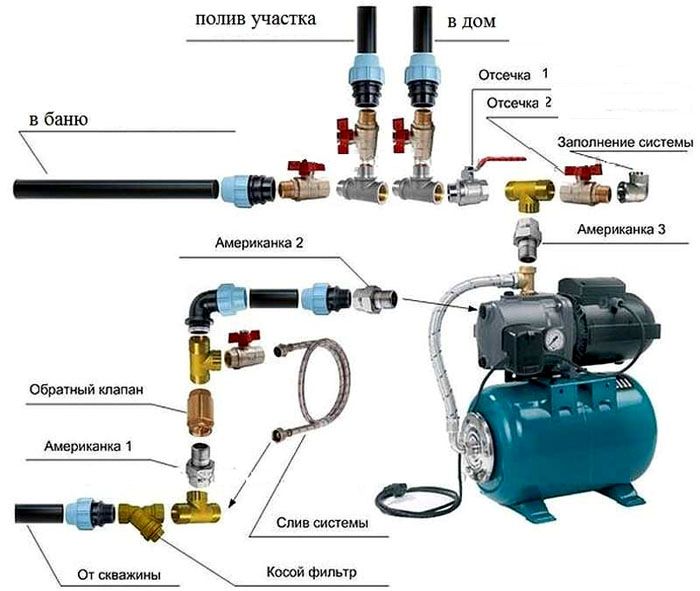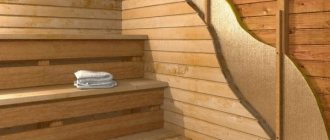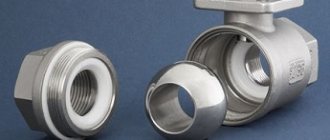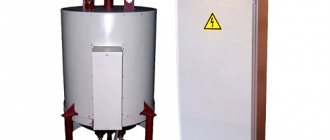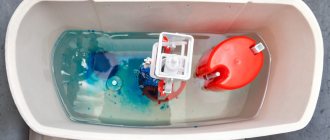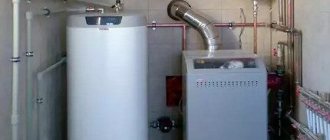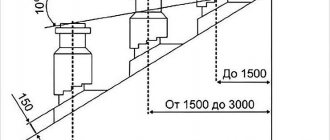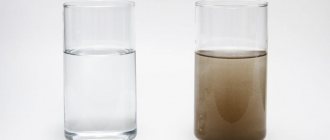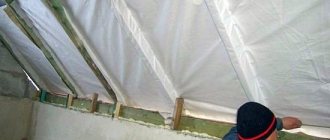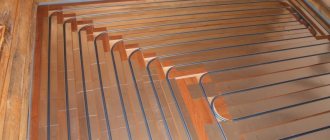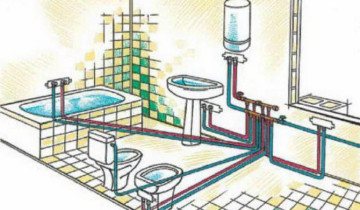
The water supply system has already firmly penetrated the minds and the plots of the owners of village houses and country cottages. This is an integral attribute of a comfortable life: with running water, showers, washing dishes, cooking become a pleasant experience.
Installing yourself is tricky, but you can do most of the work alone.
We develop a water supply scheme
In fact, there are an abundance of water supply circuits, but there are two different methods for connecting consumers:
- Tee connection.
- Collector or parallel connection.
For residents of small private houses, daisy chain connection will meet their needs, the plan for such a water supply is simpler. From the source itself, water flows in order from one consumer to the next from one pipeline with a tee outlet (1 inlet, 2 outlets) for each consumer.
Such a switching scheme is distinguished by a lack of pressure at the last consumer, during the start of the previous ones, if several such links are involved in the chain.
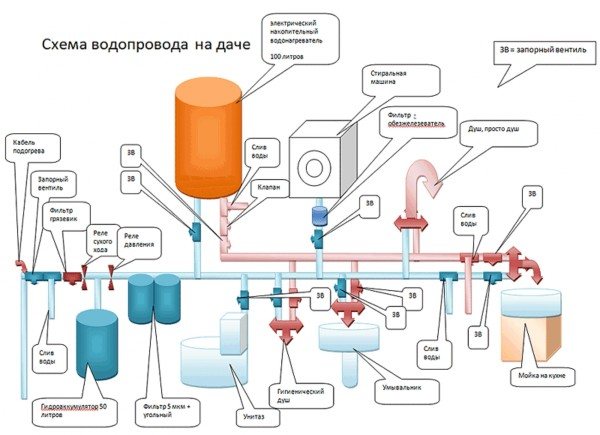

The collector connection plan looks fundamentally different.
At first, when making such a connection, you will need a collector... A water supply system is laid from it directly to each consumer. Thereby you can create more or less the same pressure at any link in the pipeline chain... Note that a serial connection will cost you more.
Any water supply system consists of a well, a pump, a hydraulic accumulator to protect the pump... And, if desired, a filter or several filters before or after the accumulator.
Plumbing pipes are of several types, the most common materials for them are polypropylene, polyethylene (cross-linked), steel. The most expensive ones are made of copper, since they last the longest.
If you mount them, you will have to call a specialist. The best choice is polypropylene in terms of price-quality ratio... Please note that plastic as a material is absolutely not suitable, since it releases harmful elements into the water.
The diameter of the pipe depends on the length of the pipeline of a private house: from 30 meters, material with a diameter of 25 mm is enough, if more than 30 meters, then 32 mm will do, and in the case when the length is less than 10 meters, the diameter varies within 16-20mm.
Further down the list you will need a submersible pump because it is more durable and more efficient than a pumping station... The height of the pump is measured together with the hose and then they are connected by a threaded connection. The pump can be positioned in any position with stainless steel cables. It is suspended from the top of the well.
Water from the pump enters the filter up to the accumulator, which is the next element of the circuit. It creates a stable pressure and allows you to turn the pump on and off as needed... The volume depends on the amount of water consumed.
The water is filtered again and divided into two streams: one of them goes to the boiler and heats up, and the second will remain cold in the collector.
It is necessary to install shut-off valves up to the collector, as well as install a drain cock.
The pipe going to the water heater is equipped with a fuse, an expansion tank, and a drain valve is installed. Same the tap is mounted at the outlet of the water heater, and after that the pipe is connected to the hot water manifold and then divorced at all points in the house.


Boilers can be different. Water can be heated with gas or electricity.A gas instantaneous water heater differs from an electric one in that the water is constantly heated.
Plumbing deserves special mention... The process of connecting the toilet begins with the installation of a corrugated pipe, which is lubricated with silicone at the junction. Next, the reliability of the connection is checked, holes are drilled into which the dowels are inserted. The toilet is attached to the corrugation and twisted.
Do you know how to choose pipes for plumbing in a private house? Read the advantages and disadvantages of copper pipe fittings for the pipeline here.
Modern PVC pipes and fittings are in no way inferior to other materials, find out more at https://klimatlab.com/vodosnabzhenie/vodoprovod/pvx-truby-i-fitingi.html
How to create your own plumbing?
Fortunately, the experience of organizing the supply of water to private buildings today is quite rich. A typical water supply scheme for a private house includes elements such as:
- water source (well or well);
- a device for supplying water to the system (pump or pumping station);
- hydroaccumulator;
- system of water pipes, external and internal;
- necessary plumbing fixtures.
If the organization of heating water for domestic needs is planned in the house, the boiler will also become part of the water supply scheme of the country house. Most often these are two-circuit models, in which the functions of heating the house and heating tap water are separated. An alternative option could be an electric storage water heater.
DIY installation
The water supply from the well is divided into two types: summer and winter:
- Summer view of the system is laid above the ground - rubber hoses are connected with adapters and thus the required length is ensured.
- The winter view of the water supply works in any season and it is laid either below the freezing of the soil, or above, but with insulation.
Before carrying out water from the well, it is necessary to make a caisson for it. You can go down into it and, it will protect the well from the ingress of dirty water.
The caisson is made of concrete rings or other materials... If its bottom and the pipeline turn out to be higher than the freezing of the soil, it makes no sense to use the caisson in case of a pipe break.
Connecting to the central highway requires significant investment in the first stages, meanwhile, partially eliminating the need for earthworks and the installation of a septic tank. You can find out information about the nearest highways in ZhKO.
To increase the water pressure in the pipeline, it is necessary to cut the pump into the general water supply pipe or install a pumping station with a hydraulic accumulator.


Usually in apartments, it is common to mount piping to the wall.... The sewer pipes are supported by clamps attached to the wall. The distance that is measured horizontally from the clamp to the clamp must be set less than 10 pipe diameters.
You can use either metal clamps with a rubber seal (rigid fastening) or without a seal so that the pipes can move freely (rigid-floating fastening).
Internal routing is a more advanced routing methodas it reduces noise and looks better. It is possible to lay pipes in concrete or gates, observing the slopes and sealing the gaps.
Welding of polypropylene pipes is carried out in two ways: socket and butt. It should be carried out at a positive ambient temperature. It is important to remember that pipes and fittings are of the same composition and are clean.... Also, do not cool the pipes after connecting with water.
During socket cooking, both parts are heated by a special heating device, then collected and cooled.
Plumbing in a private house: drawings and diagrams
One of the most convenient and profitable water supply options in a private house is to connect to a central water supply system.
The benefits of this decision are obvious:
- no need to look for a source of water in the area;
- the water in the common water supply system must comply with sanitary standards;
- low cost of the tie-in;
- the water pressure in the building will be constant.
Plumbing diagram
But these pluses can turn into minuses, for example: communications can be outdated, in this case, various layers appear on the inner surface of the pipes, which requires repair of the lines and shutting off the water. Due to deposits, the condition of the water decreases, which requires additional cleaning; registration of the necessary documents can take a long time.


Country water supply scheme
Connection to the central water supply system consists of the following stages:
- The process of registration of the necessary papers... First of all, you need to take a plan of the area with the communications laid on it and, together with the documents for the house (building permit or ownership), submit it to the local branch of the water utility, where they will issue the TU for connecting the house to the network. Then, the licensed organization draws up a draft water conduit to the house and registers it with the SES. After that, you need to take a permit for excavation for laying pipes and begin further work.
- Installing the system... Specialized organizations have the right to lay pipes and make a tie-in into the central water conduit, you can find out about which in the water utility. On your own, you can dig a ditch, add sand, fill the ditch after the end of the work. All the rest of the work, such as: connecting to the central system, finishing the pipes to the house, installing the meters is done by specialists. At the end of the process, the authorized vodokanal will draw up acts of putting the devices into operation. Throughout the entire period of work, a lot of acts are drawn up.
There are two ways to organize a water conduit in a private house:
- The connection is serial, in which a branch is made from one pipe emanating from the source to each device. Such a connection is appropriate for small houses in which there are no more than 3-4 residents, due to the simultaneous switching on of all devices, the pressure may disappear.
- When connected in parallel, the pump and the supply of the source must be sufficient in order to provide the required water pressure when the pipe is taken out to each device from the switchgear. This connection is most convenient in residential buildings.


Detailed plumbing diagram for a private house
To collect the internal water conduit of a private house, you need to be patient and have all the consumables. For the water supply system, the following elements will be needed: a water source, a pump, a container for storing water, a tee that will divide the volume of water for different needs, a purification system, a boiler, a tee that will direct the flow of water into the hot and cold water supply system, pipes. In some cases, you can do without a tank for storing water and a tee that separates water for different needs.
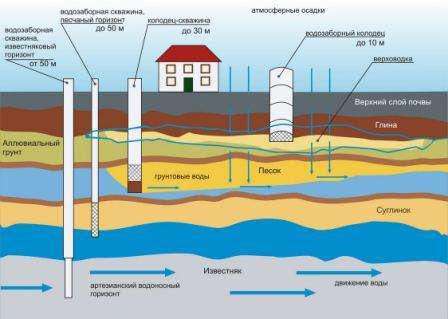

Prices for materials and equipment
- A submersible pump with a capacity of 1.7 liters per hour costs 6,700 rubles;
- You can buy a 50-liter hydroaccumulator for 4,600 rubles;
- Polypropylene pipe 4 m long from 1500 rubles;
- An electric water heater is sold at a minimum price of about 1,000 rubles.
How to connect the boiler to the water supply, the recommendations of the masters and step-by-step instructions here. Plastic caissons for wells pros and cons of polymeric materials.
When arranging a water supply system, you cannot do without a drainage filter, read how to choose such a device here.
What pipes are needed for the water supply system in the house
When choosing pipes, you should pay attention to what material they are made of. The highest quality and most expensive pipes are made of copper.They are not subject to any influences, withstand temperature and pressure drops, suppress the development of pathogenic microbes. The most common pipes are made of metal-plastic, tk. they do not accumulate mineral deposits, they are not susceptible to rust. The disadvantages are the tendency to freeze and not withstanding temperature changes.
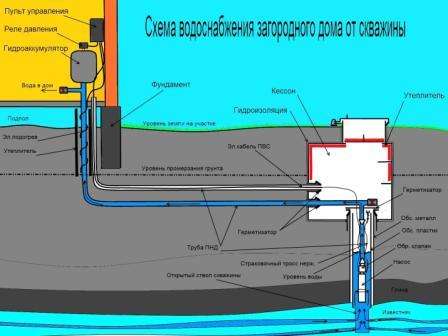

Water supply scheme from the well
Steel pipes are durable, but if the production technology has been violated, they can rust. Polypropylene pipes are only good for cold water pipes. The diameter of the pipes is determined depending on the distance from the source to the consumer: more than 30 m - 32 mm, up to 30 m - 25 mm, up to 10 m - 20 mm. For plumbing, pipes should be from 10 to 15 mm.
Watch the video: Plumbing in a private house, installation
The wiring diagram looks like this:
- with the help of a pump, water goes into a storage tank installed on an elevation;
- a tee with locks is placed, directing the flow of water to the heater and cold water pipe;
- filters are installed;
- one branch is brought out to the water heater and the other to the boiler, and from them to the devices, the pipe is attached using an adapter.
The water pressure in the house depends on the quality of the installation of pipes, the correct choice of their diameter, the location of the source relative to consumption devices.


Useful article: water supply in a country house
Knowing how to conduct a water supply to a private house from a central water supply, you will be able to significantly increase your comfort at a minimum cost. Watch the video, diagrams and drawings, then you will be able to carry out most of the work yourself, without the involvement of specialists.
Water supply wiring diagrams
Plumbing wiring can be carried out in two ways - with serial and parallel connection. The choice of the scheme depends on the number of residents, periodic or permanent stay in the house, or on the intensity of the use of tap water.
There is also a mixed type of wiring, in which the mixers are connected to the water supply system through the manifold, and the rest of the plumbing points and household appliances are connected by daisy-chaining.
Scheme # 1. Serial (tee) connection
It is an alternate supply of pipes from a riser or water heater to plumbing fixtures. First, common pipes are diverted, and then with the help of tees they lead the branches to the places of consumption.
This method of connection is more economical, requires fewer pipes, fittings, and is easy to install. The pipe routing with the tee system is more compact, it is easier to hide it under the finishing materials.
But daisy-chaining is more suitable for municipal apartments, for houses with a periodic residence or with a small number of residents. It cannot provide uniform pressure in the system when it is used by several users at the same time - at the most remote point, the water pressure will change dramatically.
In addition, if you need to carry out repairs or connect a plumbing fixture, you will have to disconnect the entire house from the water supply. Therefore, for private houses with high water consumption and permanent residence, it is better to choose a scheme with parallel wiring of the water supply system.
Scheme # 2. Parallel (collector) connection
Parallel connection is based on the supply of separate pipes from the main collector to the water intake points. For cold and hot lines, they install their own manifolds.
This method requires laying a large number of pipes and, accordingly, creates difficulties in masking them. But on the other hand, each point of water intake will have a stable water pressure, and with the simultaneous use of several plumbing fixtures, changes in the water pressure will be insignificant.
A collector is a device with one water inlet and several outlets, the number of which depends on the number of plumbing units, household appliances that use tap water for work.
The collector for cold water is mounted closer to the inlet of the pipe into the house, and for hot water - at the outlet of the water heater. A cleaning filter and a pressure regulator are installed in front of the collector.
Installation of water supply
Installation is carried out from the power source to the consumer. Installation begins with the installation of a pump in a well or a pumping station for a well.
Installing the pump
The pumping station is installed on the surface. It can be placed in the house, which makes it easier to control, but it is noisy at work. The most suitable place for her – utility room.
The submersible pump is lowered into a deep well. A cable is connected to the unit to fix it at the desired depth. With the help of an adapter or a clamp, a flexible hose is attached through which water is supplied to the accumulator.
Installation of a hydraulic accumulator
The hydraulic accumulator is designed to maintain a stable pressure in the water supply system and protects the pump from idling. Such a device is an optional element of the system, it is installed in two cases:
- to increase the water pressure in the system;
- in case of interruptions in the water supply.


What do hydraulic accumulators look like?
A hydraulic accumulator is mounted at the highest point of the water supply system, but so that it has access to it. A tee comes out of the storage tank, on which shut-off valves are installed. The other two outlets are directed to the cold manifold and the water heater.
Collector device
The collector is designed to evenly distribute the pressure in the pipes for all consumers. The number of collector pipes depends on the number of plumbing fixtures that are consumers.


Cold water manifold
Cold water from a pump or filter is supplied to the manifold. A shut-off valve with a drain valve is installed in front of it, so that, if necessary, the collector can be disconnected from the pipe.
For better water quality, filters are installed. They must be installed in front of the manifold and boiler.
The second stream is directed to the boiler, which heats the water to the required temperature and is fed to the hot collector, where it is distributed to consumers.
Each outlet of the collector has a shut-off valve and, in the event of repair work on one device, the whole system continues to work smoothly. A separate cold and hot water pipeline is laid from the distributor to each device. For a private house and apartment, polypropylene pipes are the best choice.
Pipe routing
How to solder polypropylene pipes with your own hands:
- The dimensions of the pipes for wiring are determined, they are cut to the required length. Cutting is easily done with your own hands using special scissors. It is important to ensure that the scissor blade is perpendicular to the pipe.
- Adhesion depth is noted at the edges.
- The seam must be thoroughly cleaned of dirt and dust.
- A nozzle of the corresponding diameter is installed on the soldering iron.
- The soldering iron turns on and heats up to the desired temperature.
- The pipe is advanced in the soldering iron nozzle to the mark.
- After 7 seconds, the nozzle is removed and the pipes are connected. You need to hold them a little, but do not rotate them.


Soldering water pipes
Plumbing installation
Plumbing is laid from the collector to each consumer in the following sequence:
- The distributor has taps for each pipeline, if not, then shut-off valves are installed.
- A pipe is removed from the crane.
- The next pipe is connected with a fitting using a soldering iron.
- An angle fitting is arranged for turning.
- To fit the pipes to size, they are cut with special scissors.
- Clips are mounted to the wall, with which the pipe is attached to the wall.
- Water consumption devices are connected (washbasin, shower, sink mixers; compact; washing and dishwasher and others).
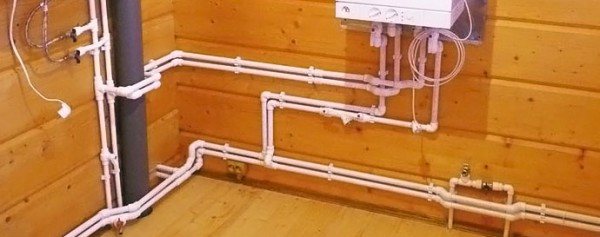

Piping in the house
There are several recommendations that it is advisable to follow:
- If pipes pass through walls, then it is advisable to shield the pipe with a ring at the place of passage in order to avoid their contact.
- The distance between the pipes should be 200-250 mm for the convenience of repair work.
- It is necessary to fix the pipes with special clips mounted on the wall. Mounts are installed in the corners, and on flat areas they are located at a distance of 1500-2000 mm.
- Angles and bends in the piping should be minimized.
